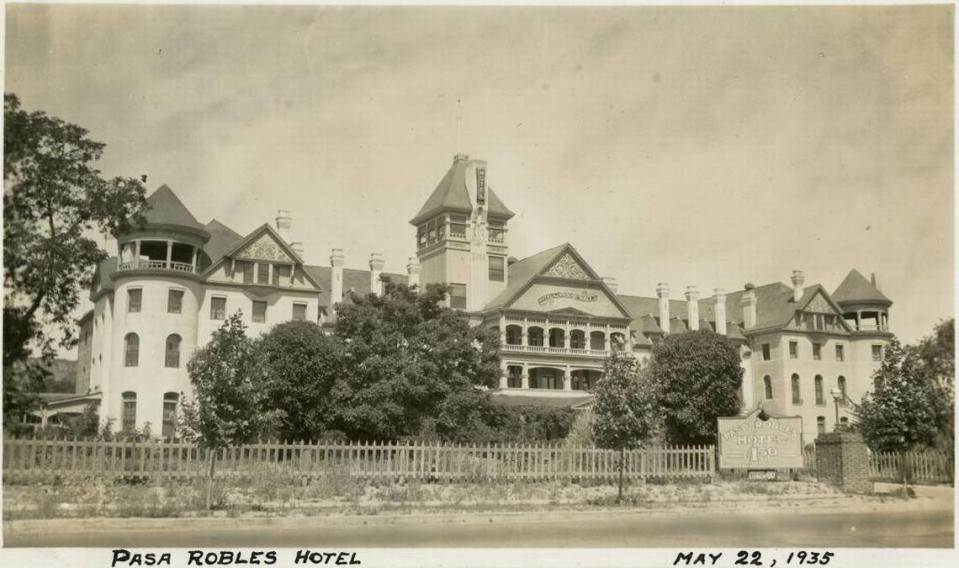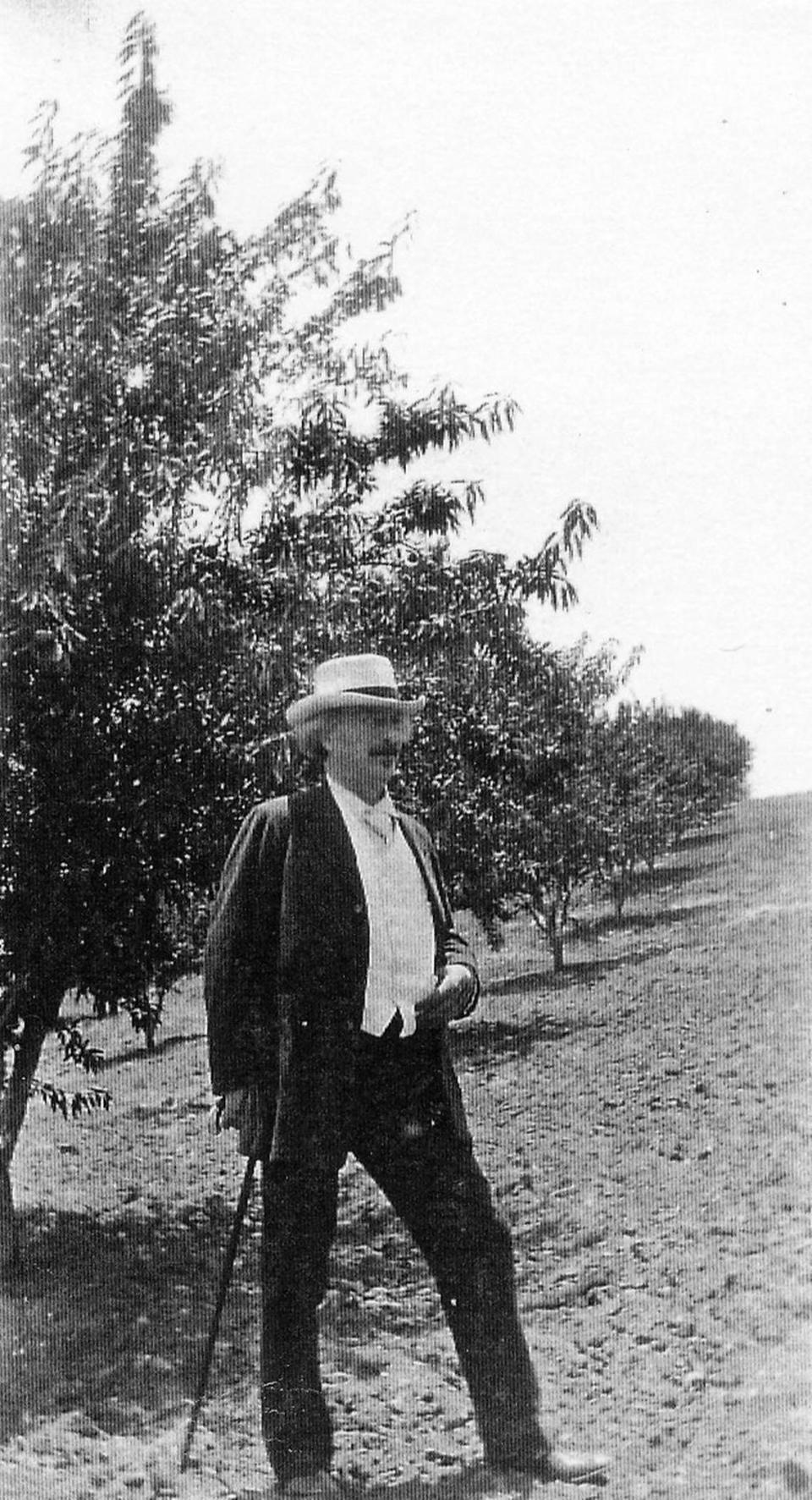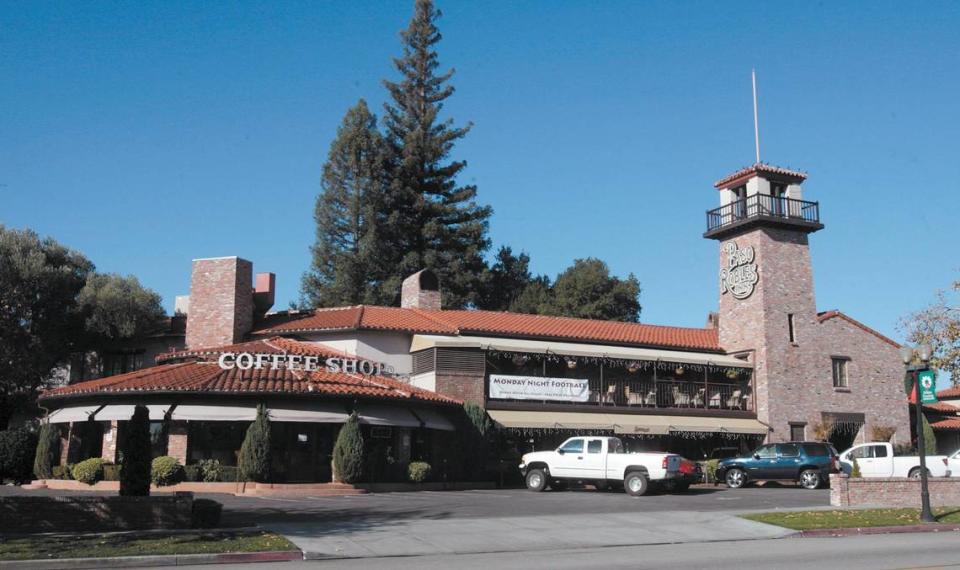Hot springs drew flood of tourists to historic Paso Robles hotel. What happened to the baths?
The Paso Robles Inn has been featured on the pages of The Tribune a couple of times this year:
In February, news broke that the property had been sold by Martin Resorts Collection to KSL Capital Partners, LLC. Then in October, it was featured in a Halloween retelling of ghost stories — not surprising for a property whose history dates back to 1889.
At the end of the 20th century, the property was purchased by Tom Martin and it was the right time for The Tribune to have a historical overview story.
This was written by Matt Lazier on Jan. 16, 1999:
Paso’s hot springs run deep through North County history
With the decision Tuesday to allow the re-establishment of hot springs at the Paso Robles Inn, the Planning Commission hearkened back to the roots of Paso Robles.
Tom Martin, who recently purchased the inn, will move forward with plans to drill a new well and begin pumping hot sulfur water into spas, something that has not happened there since the early 1940s.

The hotel was built in 1891, and the hot springs opened in 1905, but Paso Robles’ hot springs history goes back much further.
Early histories say Spanish explorers who arrived in Paso Robles found Native Americans bathing in hot springs and hot mud, according to local historian Virginia Peterson.
The hot springs were one of two key elements to the founding of Paso Robles, along with the Southern Pacific Railroad.
The railroad came in from the north and hit San Miguel in 1886, but cattle ranchers had been waiting for the railroad to come for years and had already started planning the community of Paso Robles, local historian Dan Krieger writes in his book “San Luis Obispo County: Looking Backward into the Middle Kingdom.”
In the early 1860s, investors Daniel Blackburn and Drury James (uncle of Frank and Jesse James) purchased the Paso Robles Rancho, which contained a rock formation around natural hot springs.
The Paso Robles Hot Springs would be built there in 1914, on 45 acres at the north end of town, and would stay open, on and off, until 1980.
Blackburn and James turned their property into a resort that attracted tourists, mostly from the San Francisco area, Peterson said.
In 1864, Blackburn and James built a health spa in the downtown, where the parking lot of the city hall/library currently sits, then expanded the operation in 1888.
The town incorporated a year later and the Paso Robles Inn sprang up in 1891.

Architect Stanford White built the 125-room hotel and health spa as a destination resort for the wealthy. With a separate fireplace in each room, the $160,000-inn’s chimney-packed hotel roof was like a sea of castle spires.
At the outset, inn patrons used Blackburn and James’ spas, but the hotel added its own mineral springs in 1905.
Around the same time, Blackburn and James told city leaders that locals could no longer use either of their facilities, which were overflowing with tourists, Peterson said.
In 1904, a group of 12 investors, calling themselves the Paso Robles Hot Sulphur Co., set out to provide mineral baths for the local residents and built a spa on land across from where the Park Cinemas opened in 1997.
The inn, meanwhile, burned in December 1940. Although it was rebuilt later with some of the bricks that survived the blaze, the hot spring well in the middle of the hotel grounds was capped off.
“I can’t recall the Paso Robles Inn, as it is now, ever having hot springs,” said Barbara Rowland, president of the Paso Robles Historical Society.
The original Paso Robles Inn and hot springs attracted many notable figures, such as Comstock Lode banker James Ralston, Spanish-American War hero “Fighting Bob” Evans, and Polish pianist-turned-premier Ignace Paderewski.
“The latter arrived with his hands badly crippled with arthritis,” Krieger wrote. “Within three months, he was able to resume his concert tour.”
Paderewski arrived in Paso Robles in 1913 and later bought a ranch just outside the city. He returned to his native Poland after World War I to become premier of the country, and never came back to Paso Robles, according to Krieger.
But, a yearly music festival in the downtown area still celebrates his time there.

Other notable names to visit the old Paso Robles Inn and Hot Springs, according to records from the city’s historical society, were the Pittsburgh Pirates baseball team, outlaws Frank and Jesse James and scores of European and Chinese diplomats.
Once the Paso Robles Inn opened its own mineral spring baths, James and Blackburn’s downtown operation languished and stood vacant for several years, Peterson said. It burned in 1913.
The Paso Robles Hot Springs faded over the years as well, and closed in 1980. The final closure was blamed on the harsh sulfur water, which was said to be damaging the city’s sewer system and rusting its pipes.
At that time, the city began to look at the possibility of using the underground springs to heat city buildings. Later, test drilling was done at Centennial Park as the city looked into using underground hot springs to heat the park pool.
Neither project came to fruition. Martin’s plan will make public hot springs flow in the city for the first time in two decades.
Local business figures who drafted the city’s first economic strategy in 1993 and those who are revising the document now agree that hot springs must become an even bigger part of modern day Paso Robles.
In addition to the inn, the Paso Robles Hot Springs at the north end of town needs to be reopened and the presence of the mineral springs in town needs to be marketed to draw spa enthusiasts from all over, according to the economic strategy task force.

Paso Robles Community Development Director Bob Lata said the city annexed the Paso Robles Hot Springs in 1995 to make the development process easier for anyone looking to reopen the hot baths.
So far, that process has gone nowhere from the city’s perspective.
“There have been discussions over the years with several private parties about developing something at that site, but the city has never received any plans,” Lata said.
For now, Martin is moving forward with the Planning Commission’s approval and obtaining permits to drill a new well at the Paso Robles Inn, near the capped well from the original structure.
Once the permits are granted, which could take anywhere from a month to three months, Martin expects the actual drilling process to take just days.
But, the process of renovating the old hotel and adding the equipment, including hot tubs, to utilize the hot springs will take somewhere in the neighborhood of three to four years, Martin said.

